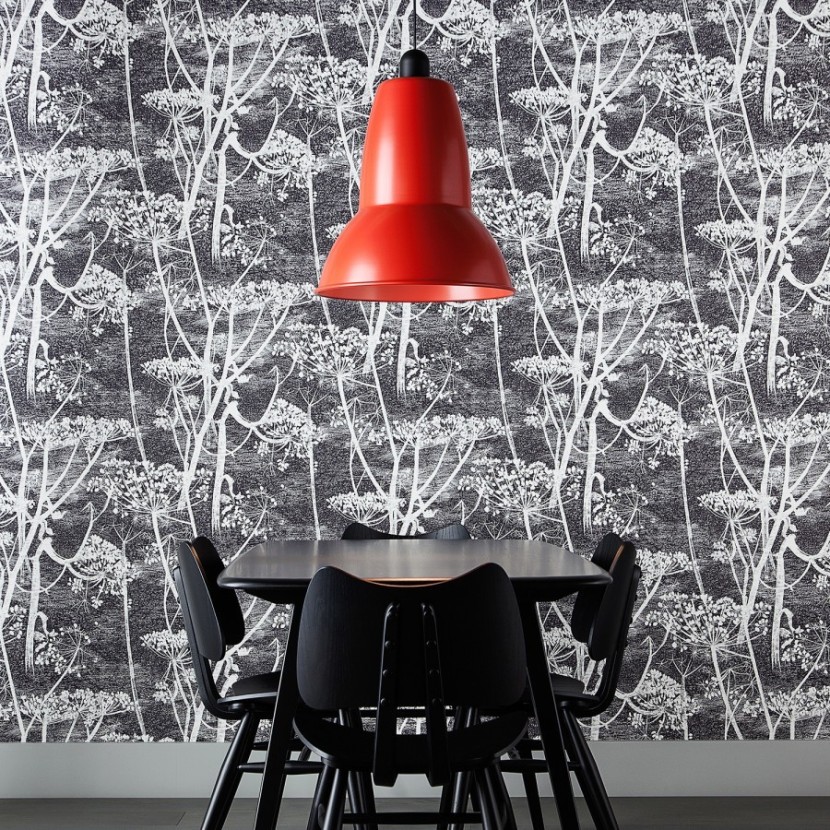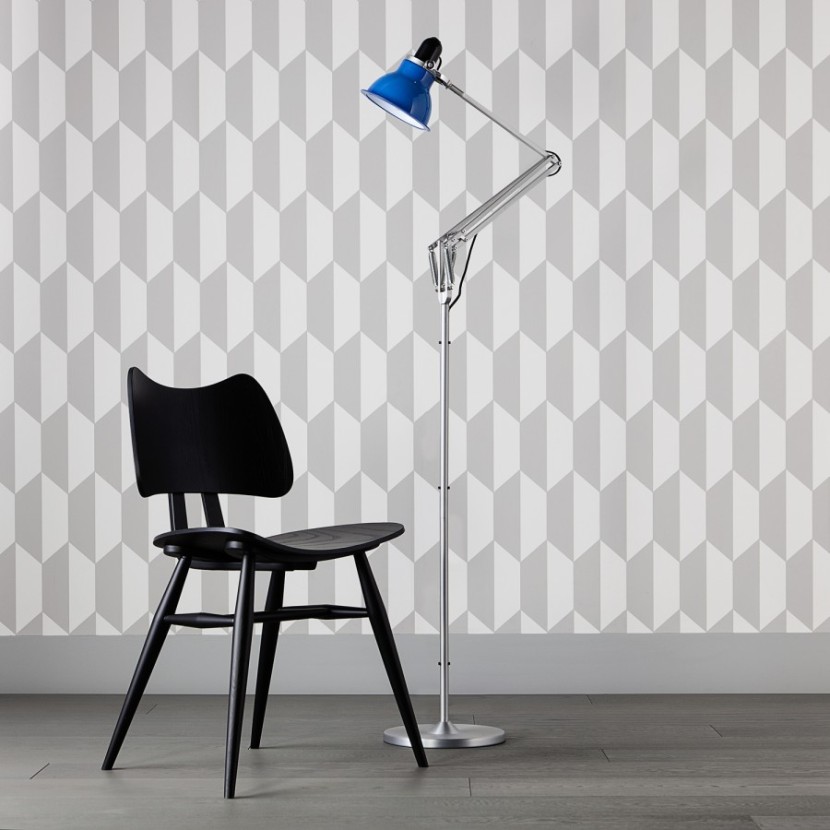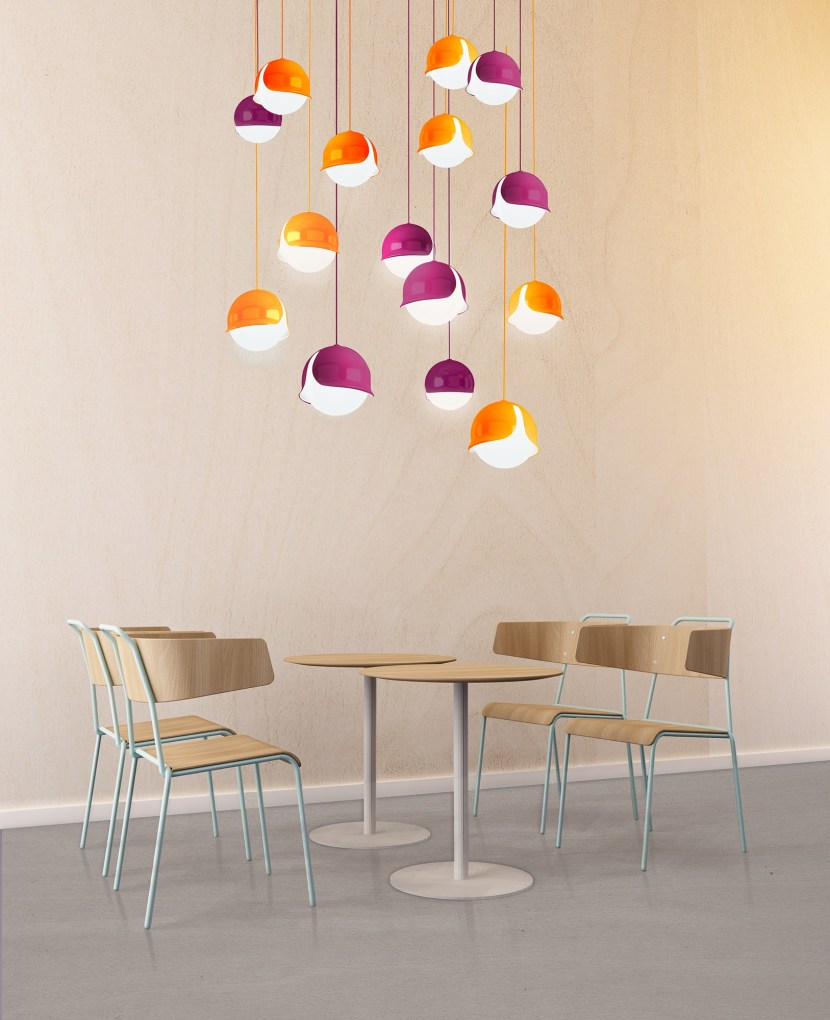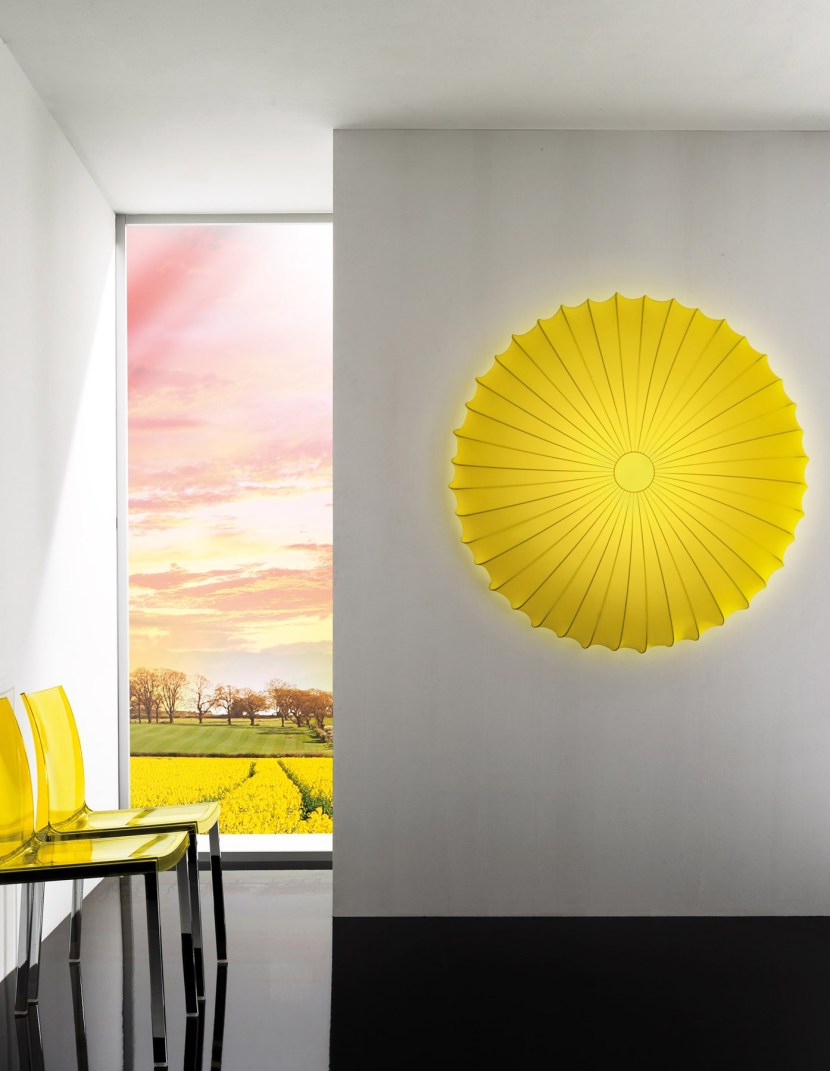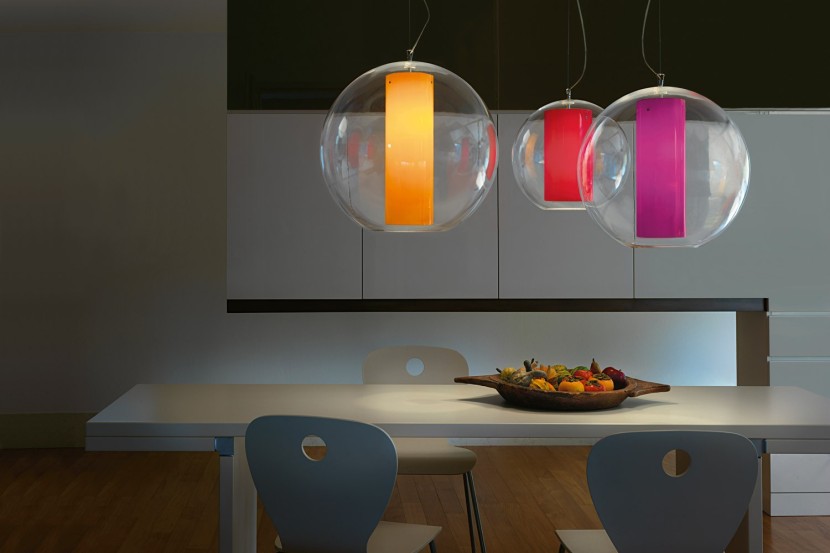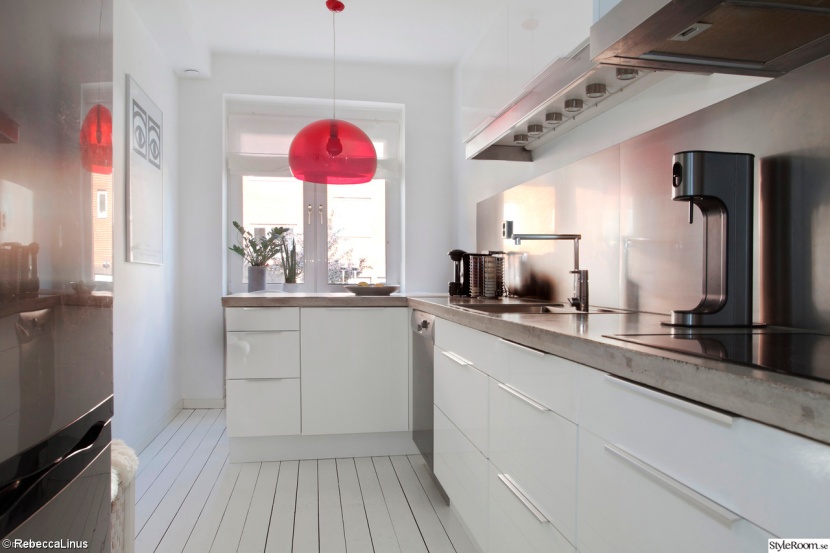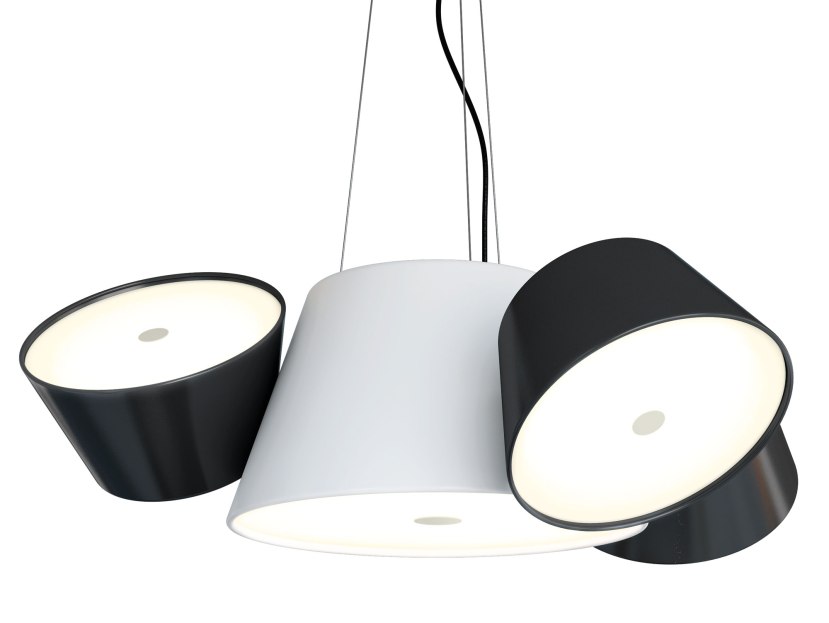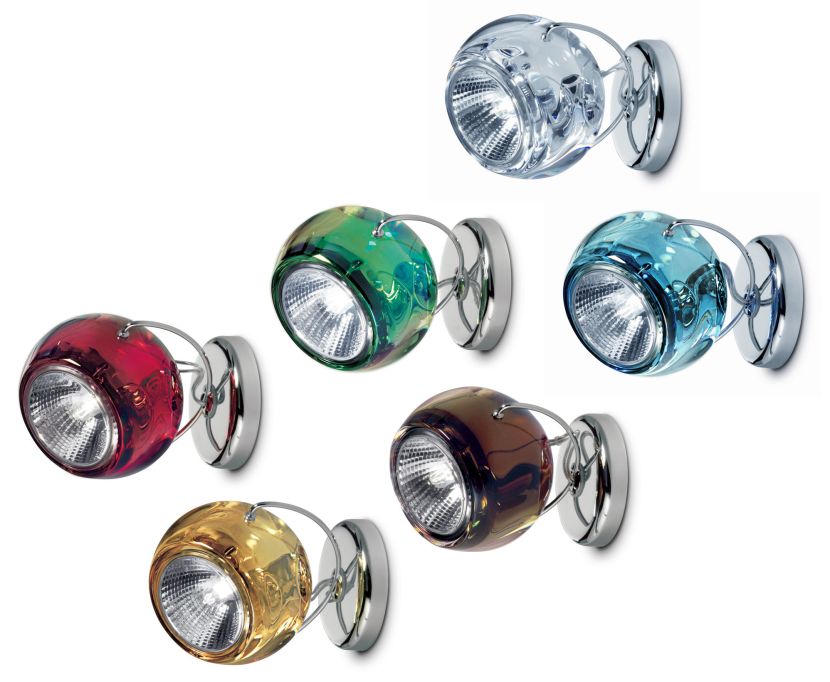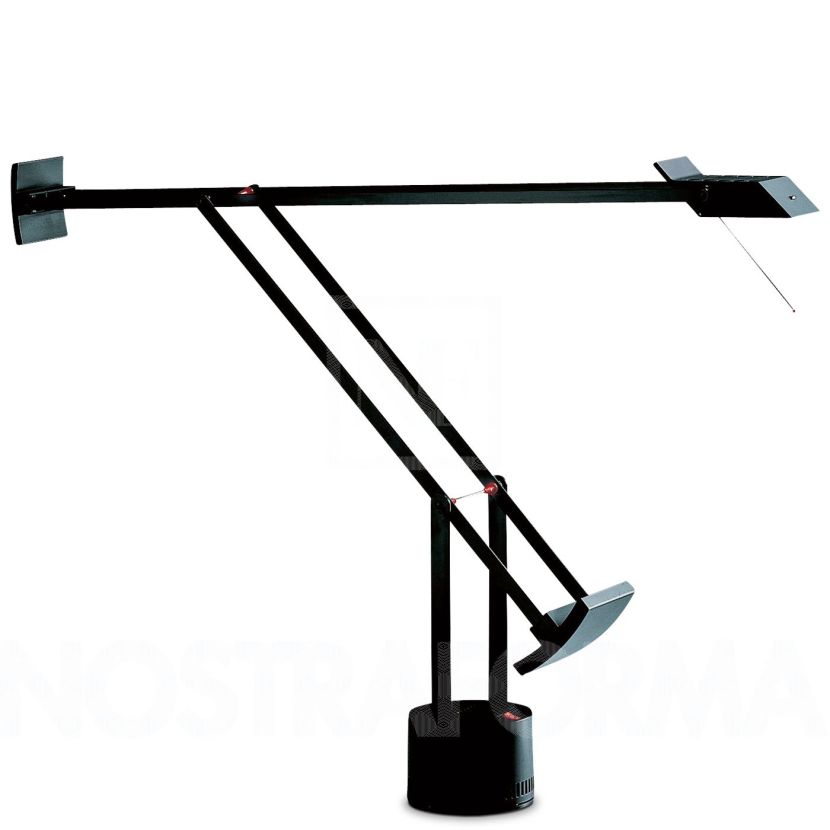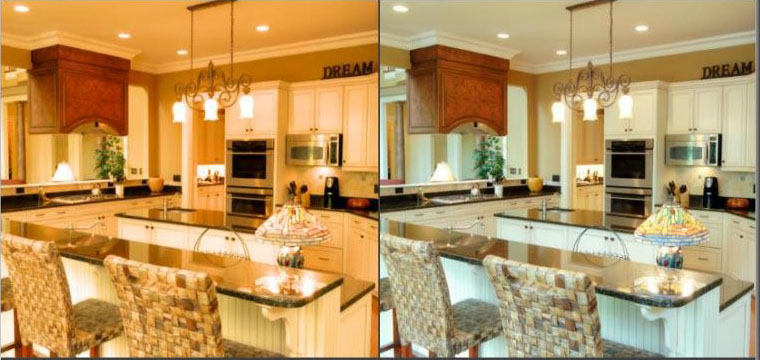Category: Tips
Inspiration: Using Bold Colors
Today we are sharing some inspiration with you all for incorporating bold colored fixtures into your homes and designs! One important thing to keep in mind when using bold colors is to make sure you’re not going overboard with them. Too many contrasting colors can be overwhelming, as well as too much of the same color. Generally bold colors work best when they are used more as a focal point or accent amongst muted colors such as white, grey, or tan. Take a look at a few designs where bold colored fixtures are used well:
Finding Your Perfect Fixture With Switch
Picking out the perfect fixture for you can be a daunting task. Today we are here to break down a few steps you can take to make the whole process a lot easier, and will guarantee you getting exactly what you need!
Step one: Finding your style
The first step to picking out a fixture may seem a bit obvious, but it is definitely one of the most important! To find something you like, you must first know WHAT you like. Do you tend to be drawn to more contemporary designs, or traditional? Simple and architectural, or something that will really stand out? What sort of finishes and colors do you like? While some of us already know the answer to all of these questions, the rest may have some difficulty. If that is your case, it helps to gain some inspiration! Go online and check out a few design sites. Save what you love and take note of what you don’t like. Get a few design magazines and do the same. Sometimes it helps to make something called a ‘mood board’. A mood board is basically a collection of things you like all gathered together! It’s a lot like making a scrapbook page.
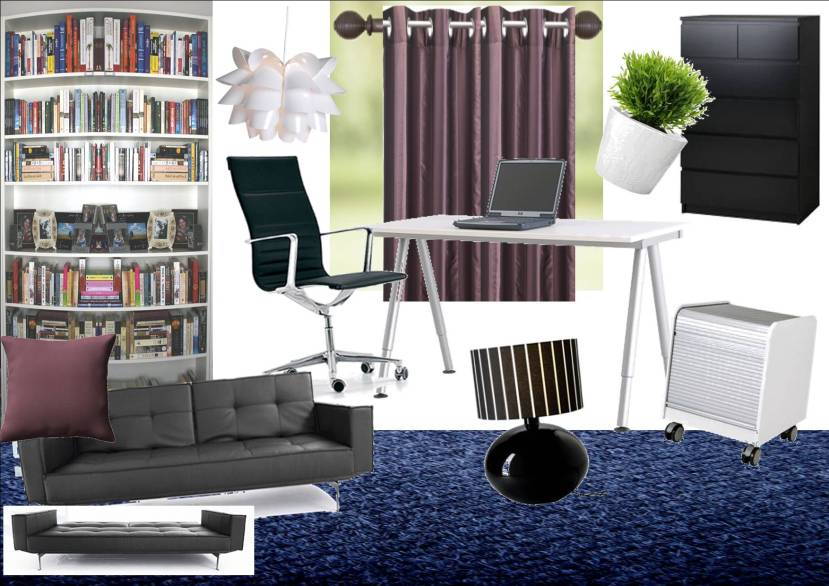
Step two: Determine what you need
This is another question that some of you may already know the answer to, but knowing exactly what it is that you need will definitely speed up the fixture selecting process. First thing to consider is what type of fixture do you need? A suspension or ceiling mount? A sconce? Table lamp? Floor lamp? Outdoor? The answer to this can be found by determining what exactly the fixture will be used for and what it needs to accomplish. Do you need general lighting or task lighting? Is the fixture a decorative element or not?
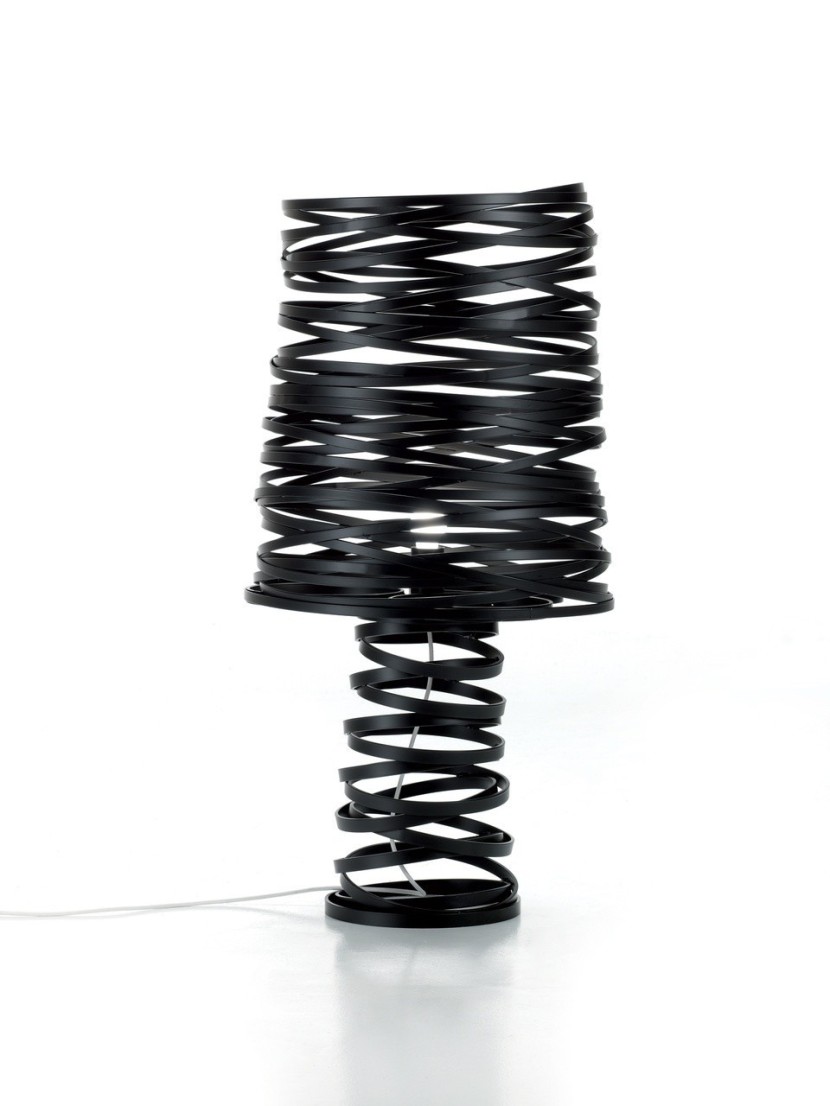
Step three: Determine your budget
This step doesn’t need much explaining. Determine how much you are willing to spend on a fixture. Make sure to consider installation costs as well!
Step four: Come and see us!
Finally, come in to see us! Bring in some of your inspiration to inspire us as well. Once you have a good idea of what you like, need, and can afford, it will be a breeze finding the perfect fixture for you!
Tip: Under Cabinet Lighting
Today we are here to talk to you about under cabinet lighting! Although under cabinet lighting is a subtle visual addition to your kitchen, it really does make a huge difference when it comes to productivity. Being able to clearly see what you’re cutting, mashing, mixing, measuring, ect. while you’re cooking at all hours of the day and night certainly has its benefits, and general over head lighting tends to leave shadows on our counters cast by the upper cabinets.
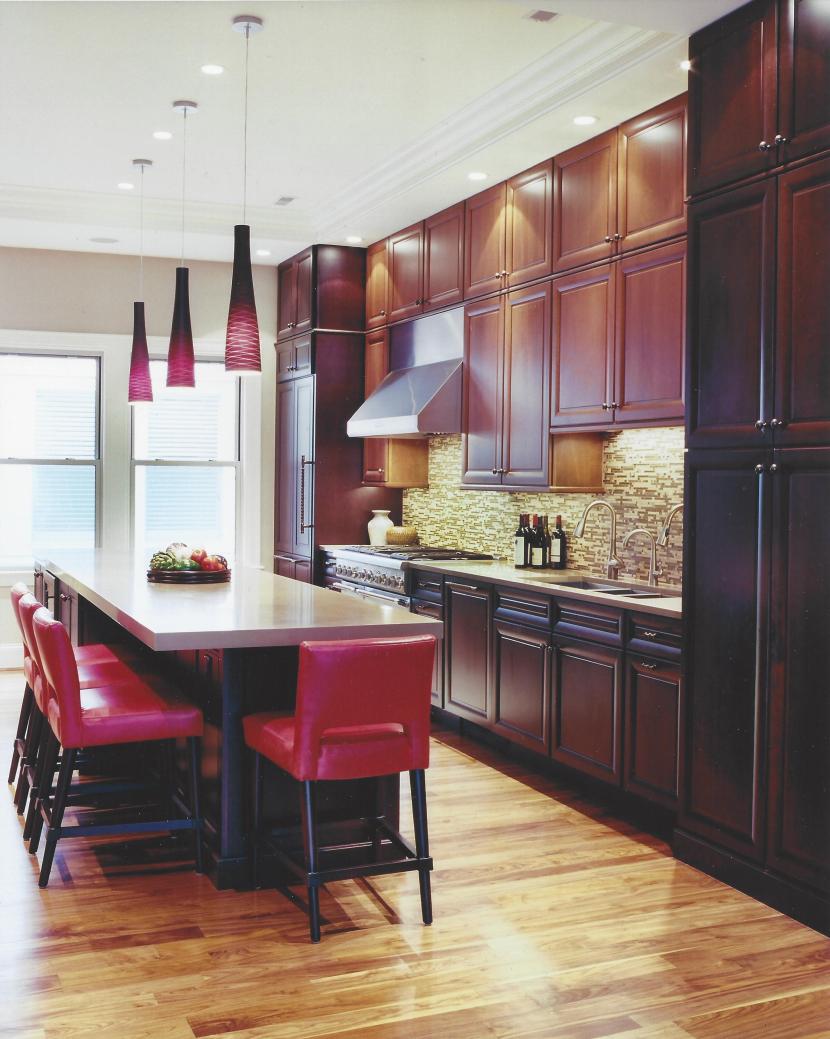
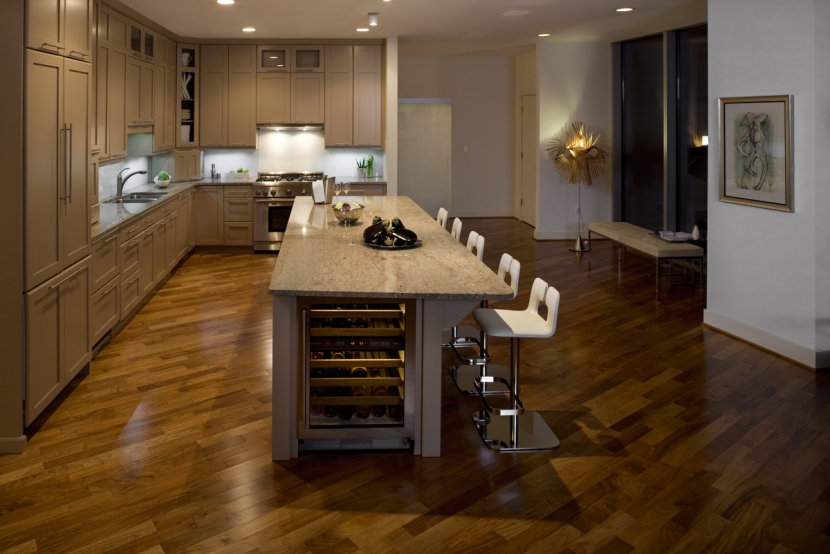
There are a variety of options for under cabinet lighting. We’ll go over the most popular.
Pucks
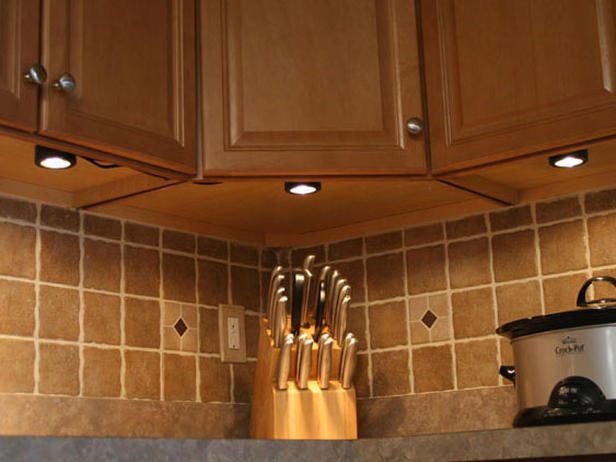
Pucks are easy to install and can be wired together to all operate on one switch. Typically they come as LEDs, so they will never need to be changed. You can also get battery operated versions that simply stick onto your cabinets. These can be a good option for renters who can’t install hard wired fixtures. The downside to puck lights is that they create a sort of spotlight effect. You can definitely notice where each light is located from a distance.
Linear Strips
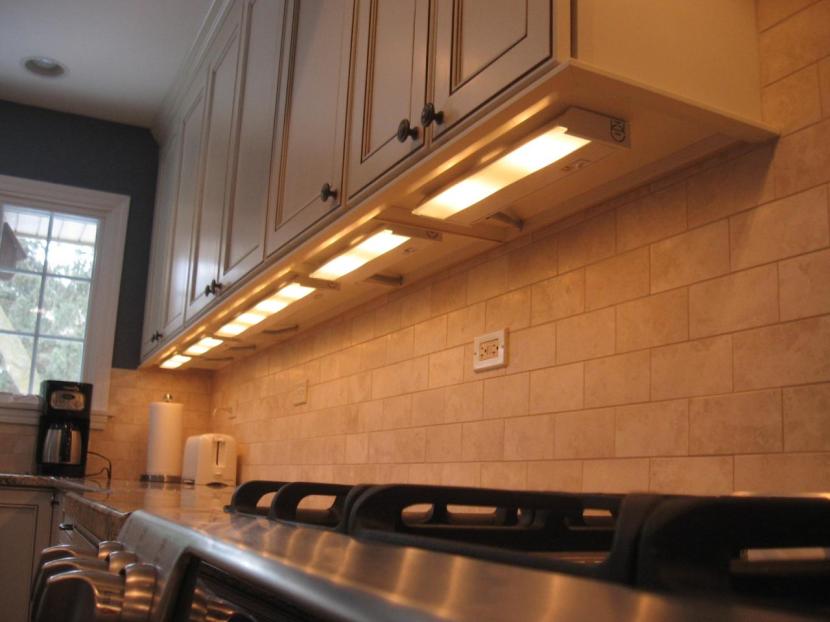
These tend to be the most expensive option. They come in many different variations and with various lamping options. We like to recommend LED for their longevity. These provide a much more even spread of light, and often offer dimming options. Most need to be hardwired and require a transformer. In new construction, this can be included in the electrical plan, but for existing kitchens, we often tuck it away into a cabinet.
LED Tape Light
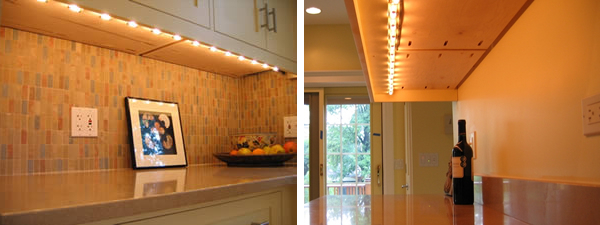
LED tape light is one of the most popular options. It offers a low profile, so it can rarely be seen and is very discrete when applied under cabinets. It comes in any variety of lengths and color temperatures, as well as RGB, and it has a nice, even distribution of light. Tape light is simple to install and can be very versatile. Here at Switch, we use it in any number of scenarios. It’s one disadvantage is that it tends to have a lower light output than the other two options.
We hope this helps many of you when selecting under cabinet lighting for your kitchens! If you happen to have any questions or would like to discuss options with us please contact us!
Tip: The Benefits of LEDs
Today we’re going to talk about the benefits of using LEDs!
LEDs (or Light Emitting Diodes) are really taking the world of lighting by storm, and it’s pretty obvious why. LEDs, because of their small size, can be used to create all kinds of new and exciting lighting fixtures with interesting shapes and sizes. They have opened up an entirely new door when it comes to lighting design.
Of course this is an amazing thing, but LEDs have so much more to offer!
Long Life
One of the most fantastic things that LEDs have to offer is their light hours. LEDs can last for up to 100,000 light hours! Let me break that down; at 100,000 hours, if you leave the light on 100% of the time, it will last for 11 years! Of course (we hope) you would never leave a light on continuously like that. Let’s say that you leave it on 50% of the time, it would then last 22 years! Basically, you’ll never have to change the bulb.
Energy Efficient
A traditional bulb typically operates around 20% efficiency. This means that only 20% of the energy going into the bulb is put out as light. The remaining 80% is output mostly as heat! LEDs operate at a much better 80% efficiency!
Less Maintenance
Since LEDs have such long life spans, they require virtually no maintenance. This is especially beneficial for businesses with many more lights than a typical home. No bulbs needing changed is always a good thing.
Environmentally Friendly
LED bulbs are free of toxic chemicals unlike fluorescent and incandescents. This combined with the fact that you never need to replace them makes them a good idea for the environment. Less toxic waste to dispose of!
Overall, LEDs offer many benefits that everyone, including the Earth, can receive!
Tip: Choosing Color Temperature
Choosing a color temperature for your home is important. It can, however, be a confusing task. We’re here today to give you a few pointers and information that will make the decision an easy one!
As you can see from the photo, the color temperature you choose can have a tremendous effect on your space! We rate the color temperature with the term “Kelvins”. Kelvins refers to how warm (yellow/ orangish) or cool (blue/ greenish) a light is. The higher the kelvins, the cooler the light.

For a long time, people pretty much always used a warm color temperature for their homes. Everyone liked how warm and cozy it made their spaces feel. This is perfectly fine for living spaces such as dens, dinning rooms, and living rooms, but for spaces you work and preform tasks in, a cooler temperature is more ideal. Let’s go through ideal temperatures for typical rooms in a home.
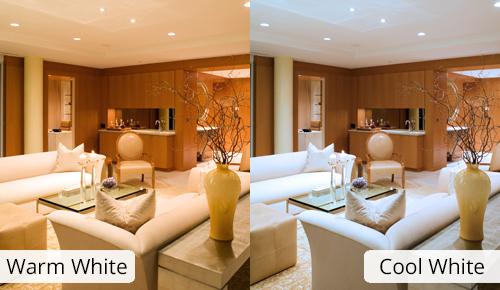
2700K– At 2700K, we get a “soft white”, which is slightly yellow. This makes a space feel warm and cozy, making it ideal for living rooms, bedrooms, and dinning rooms.
4001K– At 4001K, we get a “cool white”, which is a pretty true white. This makes it do well for spaces like kitchens, baths, and offices.
5000-6500K– Any color temperature between 5000K and 6500K is considered equivalent to daylight, spefically around noon on a cloudless day. It has a slightly blueish hue. Since this is the “truest” light, it is ideal for any space in which reading or complex activities (cooking, applying makeup, ect.) are preformed. This is because it offers the greatest color contrast.
We hope that this post was helpful to everyone, and that it will now be a simple task to choose a color temperature!
Tip: Pendant Hanging Height
When it comes to deciding what height to hang a pendant or suspension fixture, there are a few guidelines you can go by to make sure your new light is at the appropriate height. We’re going to go over a few different scenarios you may come across.
Over the Table
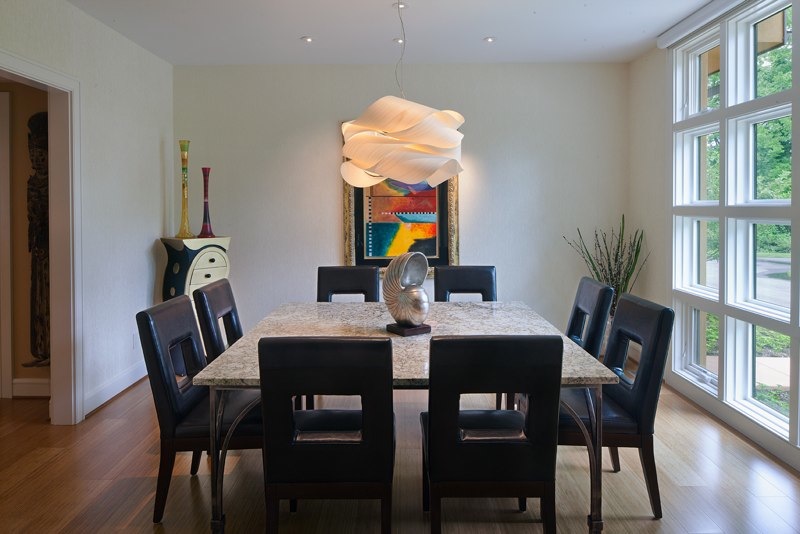
When hanging a fixture over a dining room table, you want the fixture to be low enough to provide enough light, but high enough to be out of your way and line of sight while you are at the table. Generally we suggest hanging it around 30″ from the surface of your table to the bottom of the light.
Over the Counter
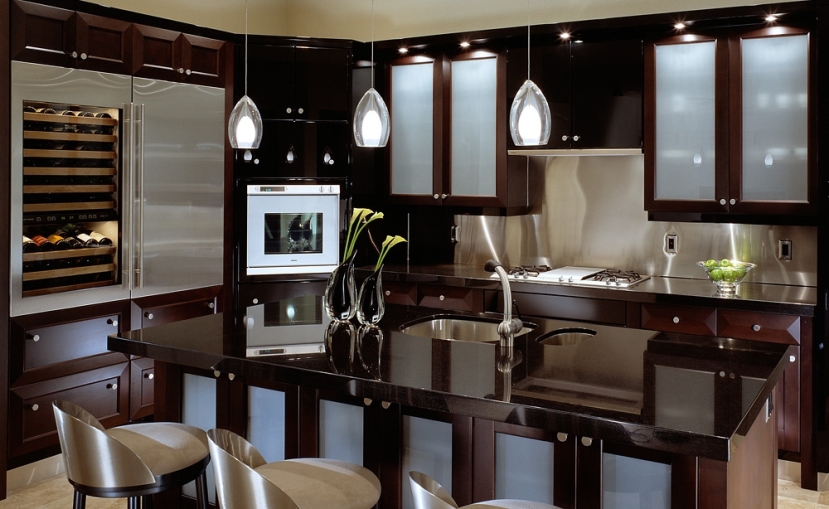
For fixtures over a counter, we suggest hanging them a bit higher than over a table. This is because we typically do a wider variety of things at a counter. You could either be standing or sitting. You want to make sure if someone is sitting at the counter, or standing to cook or clean, the fixtures are not obstructing their view. Hang pendants 30″-40″ from the surface of the counter to the bottom of the light. Your ceiling height can factor into where in that range you choose. With a higher ceiling, you should hang the pendants a little higher.
Not Over Anything (Foyer, Living Room, Ect.)
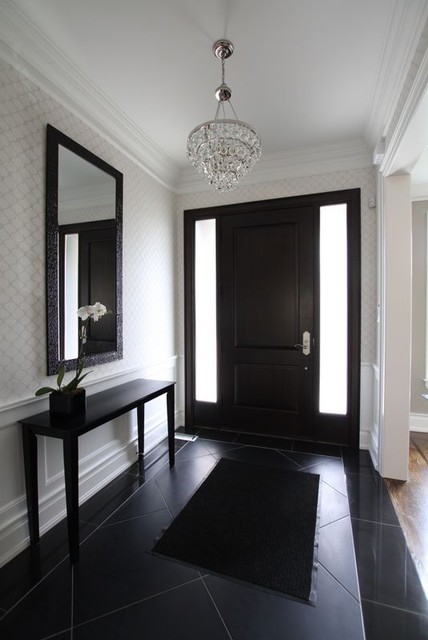
As a general rule, we wouldn’t suggest using a suspended fixture that isn’t over anything at all if your ceilings are not more than 8′, but all fixtures should be at least 60″ AFF (Above the Finished Floor). If your ceilings are higher than 11′, then we suggest adding an additional 3″ for every foot about 11.
Tip: Proper Vanity Lighting
Proper vanity lighting is something that we feel a lot of people don’t thoroughly think about and understand. So many bathroom mirrors get adorned with a single fixture above it. While this is adequate for possibly a guest bath or commercial spaces, the space that is used to prepare ourselves for the day should not be lit in this manner.
A single light above the mirror is not ideal for applying make-up, shaving, or any of the other tasks that require good lighting on your face. When the light source is above you, it casts unwanted shadows on your face.
To achieve good lighting for your vanity space, there should be a fixture on both sides of the mirror. The fixtures should also have a decent diffuser to soften the light. This helps prevent glare and harsh light. With a light source on both sides of the face, you can be sure that your whole face is well lit without shadows!
Take a look at some examples. A few companies we carry even offer mirrors with built-in lights!


Inspiration: Over the Dining Room Table
Hello, friends!
Today we’re sharing some ideas for lighting over your dining room table! Whether your style is more classic, or you want something more fun and exciting, these photos should get you inspired!
Lilith by Leucos

Ge by Kartell

Pangen by Fontana Arte
Canal by Leucos

Discoco by Marset

Fl/y by Kartell

Pirce by Artemide

Muse by Axo
Using Multiple Pendants:

Seguro by LBL

Fire by Tech Lighting
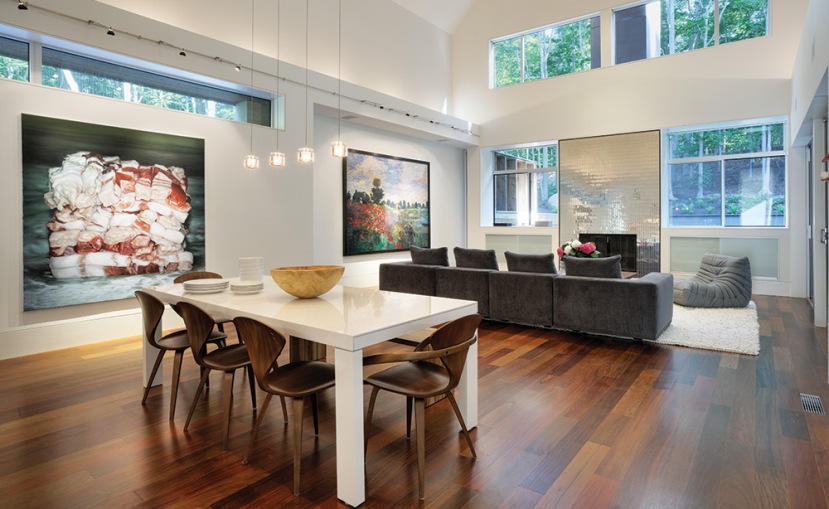
Kube by Tech Lighting

Briolette by LBL
![]()
Beacon by Tech Lighting
Inspiration: Lighting the Outdoors
Hello, Friends!
Today we are sharing some inspiration for lighting your outdoor space! If you’re thinking of getting some lighting for outside, but aren’t sure what you want, take a look at some of these photos and get some ideas!
Tip: Using Layered Lighting
If there is one thing that all lighting designers agree on, it is that the key to good lighting is the use of layered lighting. Using layers of light not only allows for maximum functionality and flexibility out of a space, but can also be used to create a variety of moods.
There are three layers that should be considered and included in every lighting design: general (or ambient) lighting, task lighting, and accent lighting.
General Lighting

General lighting is typically the first layer to take into consideration. It consists of ceiling mounts, down lights, pendants, and cove lighting (like above cabinet lighting). General lighting is used to uniformly light a space, and tends to be a soft light.
Task Lighting
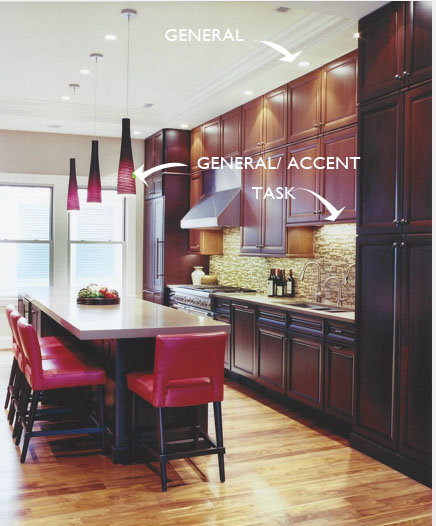
Task lighting is used to provide extra light needed to perform specific activities. Examples of task lighting may be a desk lamp a student uses for homework, or under cabinet lighting that helps you see when chopping vegetables! These usually consist of table and floor lamps.
Accent Lighting
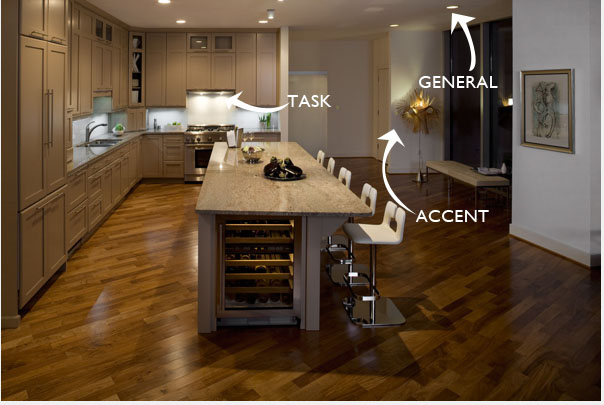
Accent lighting is used to draw attention to something using a brighter contrast. In a lot of cases, it is used to highlight artwork or architectural details. A lot of accent lighting is usually used in landscape architecture to highlight a specific tree or textured wall. These usually consist of track lighting, down lights, and decorative lamps.
Dimming and controls:
A good thing to consider when using layered lighting is the controls. It is especially helpful to have each layer on separate switching and dimming. This allows for the widest variety of moods and functions available to the user!
Still have some questions about using layered lighting? Come in or schedule a consultation with us! We’d love to answer any questions!

